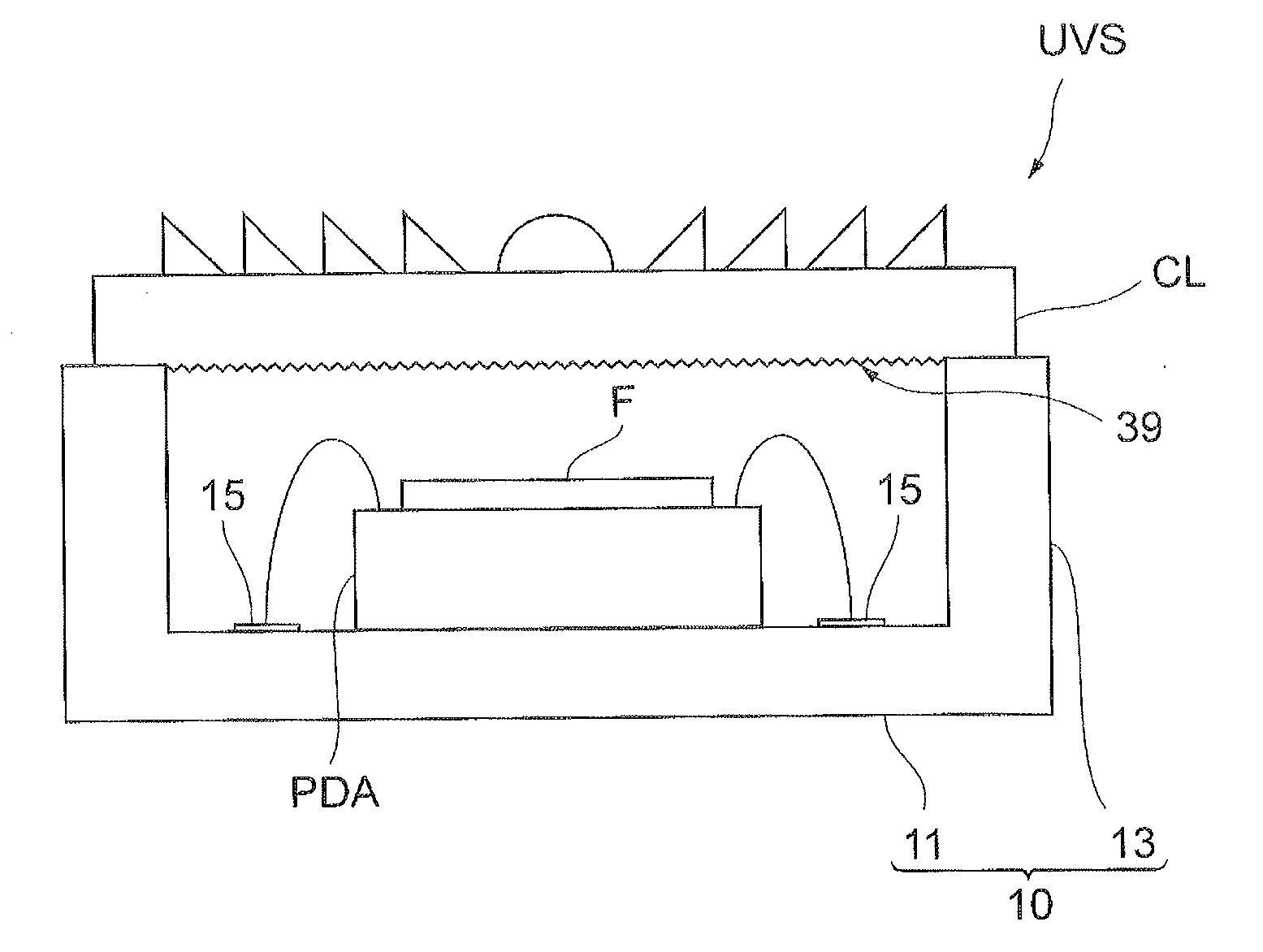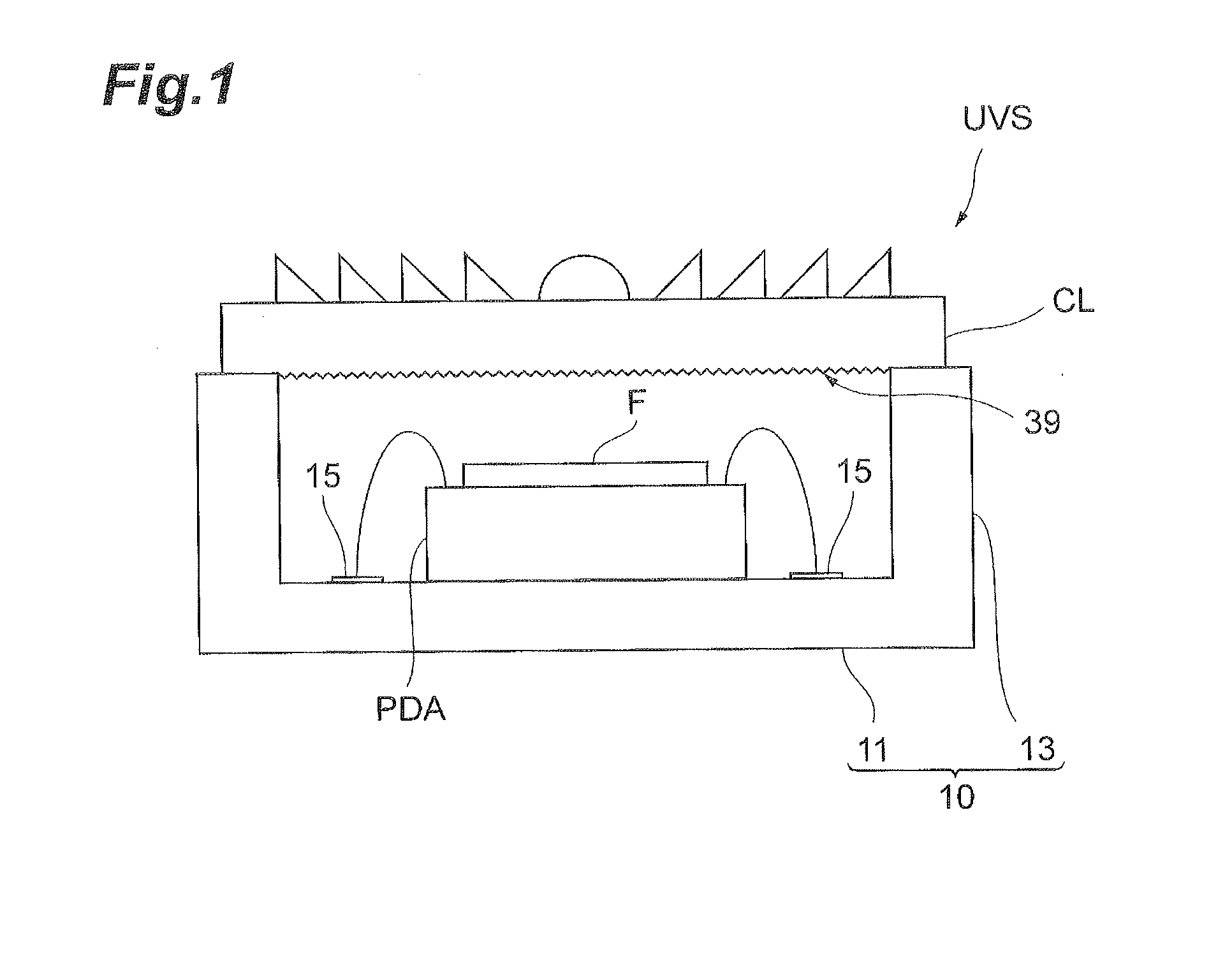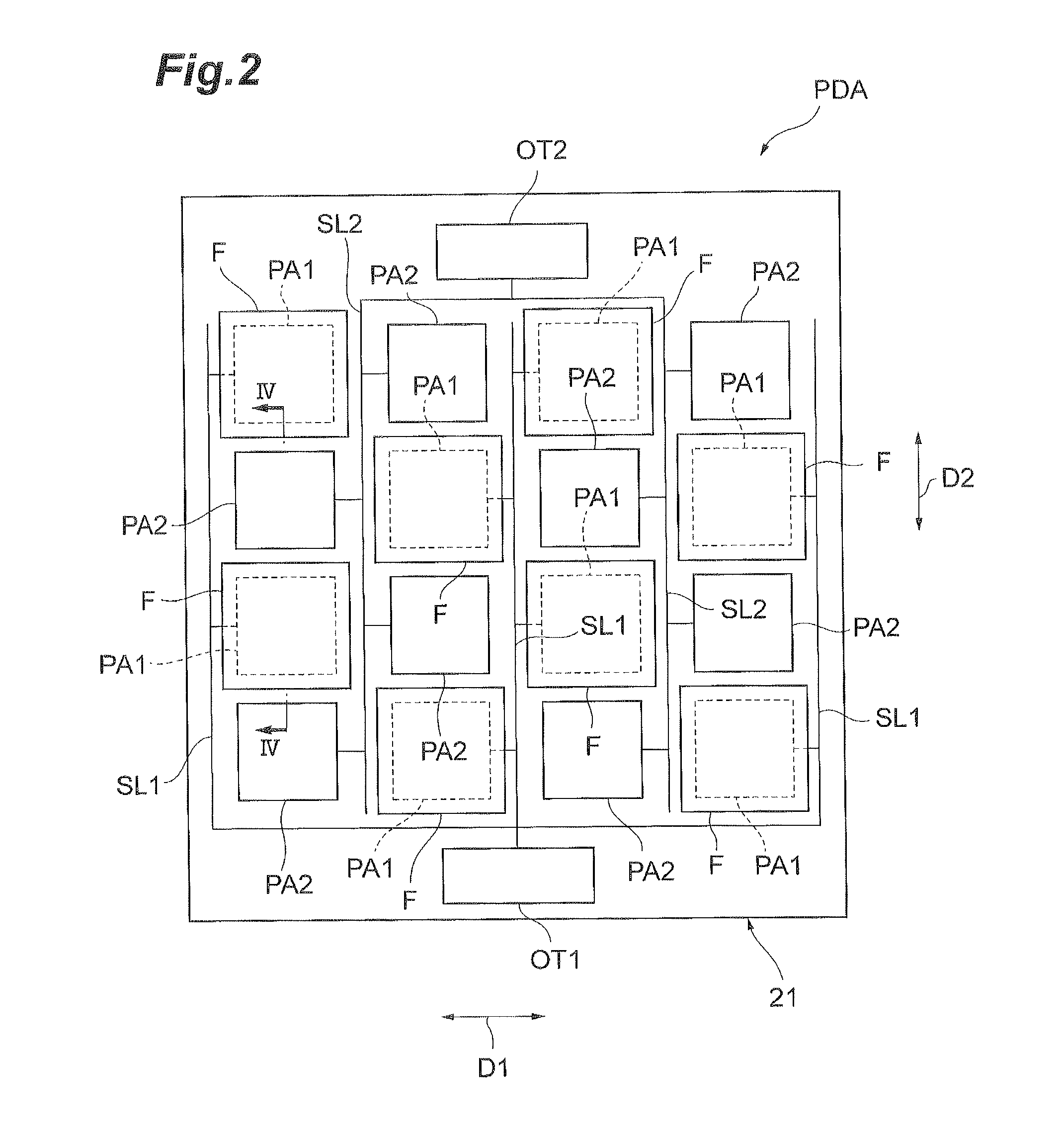Ultraviolet sensor and ultraviolet detecting device
a technology of ultraviolet light and ultraviolet light, which is applied in the direction of diodes, semiconductor devices, radiation control devices, etc., can solve the problems of difficult for the uv sensor using the compound semiconductor difficult for the uv sensor using the silicon photodiodes difficult for the foregoing uv sensor to achieve a sufficient detection sensitivity characteristic, etc., to achieve the effect of easy formation, high detection
- Summary
- Abstract
- Description
- Claims
- Application Information
AI Technical Summary
Benefits of technology
Problems solved by technology
Method used
Image
Examples
Embodiment Construction
[0035]The embodiment of the present invention will be described below in detail with reference to the accompanying drawings. In the description, identical elements or elements with identical functionality will be denoted by the same reference signs, without redundant description.
[0036]A configuration of a UV sensor UVS according to the present embodiment will be described with reference to FIGS. 1 to 5. FIG. 1 is a conceptual drawing for explaining a cross-sectional configuration of the UV sensor according to the present embodiment. FIG. 2 is a plan view showing a silicon photodiode array, which the UV sensor according to the present embodiment includes. FIG. 3 is a plan view showing a first pixel region and a second pixel region in the silicon photodiode array shown in FIG. 2. FIG. 4 is a drawing for explaining a cross-sectional configuration along the line IV-IV in FIG. 2. FIG. 5 is a circuit diagram of the UV sensor according to the present embodiment.
[0037]The UV sensor UVS, as ...
PUM
 Login to View More
Login to View More Abstract
Description
Claims
Application Information
 Login to View More
Login to View More - R&D
- Intellectual Property
- Life Sciences
- Materials
- Tech Scout
- Unparalleled Data Quality
- Higher Quality Content
- 60% Fewer Hallucinations
Browse by: Latest US Patents, China's latest patents, Technical Efficacy Thesaurus, Application Domain, Technology Topic, Popular Technical Reports.
© 2025 PatSnap. All rights reserved.Legal|Privacy policy|Modern Slavery Act Transparency Statement|Sitemap|About US| Contact US: help@patsnap.com



